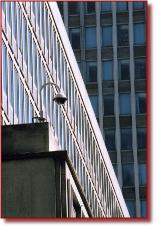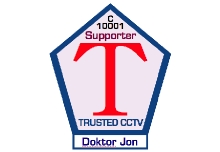 |
||
 |
||
![]()
![]()
![]()
![]()
![]()
![]()
![]()
![]()
![]()
![]()
![]()
![]()
![]()
![]()
![]()
![]()
![]()
![]()
![]()
![]()
![]()
![]()
![]()
![]()
![]()
![]()
![]()
![]()
![]()
![]()
![]()
![]()
![]()
![]()
![]()
![]()
![]()
![]()
![]()
IMPORTANT: No material may be reproduced, copied or redistributed from this site, without the express written consent of doktorjon.co.uk
All the detailed information on this site is provided in good faith; and as such, Doktor Jon does not accept responsibility for any consequential loss, injury or disadvantage resulting from any individual or organisation acting on the details contained herein.
© doktorjon.com 2004 - 2012
![]()
![]()
![]()
![]()
![]()
![]()
![]()
![]()
![]()
![]()
![]()
![]()
![]()
![]()
![]()
![]()
![]()
![]()
![]()
![]()
![]()
![]()
![]()
![]()
![]()
![]()
![]()
![]()
Please Note - Doktor Jon is currently upgrading his site, so you may see some layout changes on various pages, whilst the work is in progress.
Hopefully, the complete re-design and improvements, should be completed during 2012.
Video Recording Equipment
The recording part of the system is probably the singular most technically complex piece of equipment in an average CCTV system, but in a purely practical sense, it shouldn’t be too difficult to evaluate (although it might be well worth digging out the manufacturers Operating Manual for this bit of the exercise ... or maybe not!).
RECORDER TYPE
Firstly, we have to establish what type of recording system is in use ...
... is it a conventional analogue VHS or S-VHS tape based machine, such as ... ... a basic “real time only” VHS Video recorder? ... a continuously recording Time Lapse Video connected to single or multiple cameras? (using either a PIP, QUAD or Switcher unit, or perhaps a multi channel Recording Multiplexer)? ... a Time Lapse Video that only records when triggered by a movement sensor? ... or is it a tape or Hard Disc Drive (HDD) based 'Digital' machine (DVR), such as ... ... a basic “real time only” DVD or BluRay removable disc recorder? ... a constant record Digital Video Recorder (DVR) either single or multiple input? ... a constant record Digital video server connected to a computer network (NVR or NAS)? ... a constant record PC based Video recording package (either 'dedicated' or 'shared')? ... a DVR or PC based systems that only records when triggered by a movement sensor?
RECORDING SPEED
Does your system record in “Real Time” (25ips UK, 30ips US) showing normal speed movement on playback?
If it's an analogue Time Lapse Video what record speed is normally used ...?
If a DVR, how many images per second is it recording for each connected camera?
If an NVR, typically how many images per second is it recording for each connected camera?
RECORDING / PLAYBACK QUALITY
For tape based recorders, it is important to gauge a number of factors that could affect overall picture quality, including dropout, playback stability, interference or lines in the picture, image break up etc.
With a digital DVR or NVR playback stability, compression, resolution & quality settings, picture size and noise, can all seriously affect the playback.
Also some modern video record systems are deliberately designed to degrade recordings over time, either by dropping the number of recorded images per second (acceptable in many situations), or automatically re-sizing or increasing compression to save on data storage (unacceptable in most situations).
RECORDING CAPACITY
With tape or DVD based recording media, real time will only allow a maximum of perhaps four hours at normal speed, although Time Lapse machines can be set to record for longer periods on a single tape by effectivelly reducing the number of pictures recorded every second.
A digital DVR or NVR will be limited by the size of the hard disc arrays when viewed in relation to the record settings. There are many factors that determine storage requirements and whilst this will need to be evaluated on an individual basis, it's very unusual not to be able to make some improvements often using very simple techniques.
RECORDING EXPORT
How does the operator save the video recordings?:-
Remove and store individual video cassettes (if so, for how long ... 7 - 14 - 21 - 30/31 days)?
Are specific clips copied to CD / DVD / BluRay / USB / HDD / SD recording media?
Can the entire contents or significant chunks of a hard disc be backed up to external media?
Is it possible to easily remove and store a hard disc, and replace it with another HDD?
Is material copied in part or in its entirety, to a remote network server (NVR)
It's also important to consider how easy it is to export essential video recordings, and take account of the number of persons on site capable of making copies when required.
Is the recording playback software readily available, or will this cause issues for investigating officers?
The 'Legal Compliance' stage of a "TRUSTED"© Basic CCTV assessment >>

How can you tell if your
Video Surveillance System
is 'TRUSTED'©
Whilst the "TRUSTED"© campaign is about raising awareness of how to improve the quality of images and recordings, it is vitally important that CCTV users have a relatively simple way of measuring their systems effectiveness, for identifying and recording defined targets





